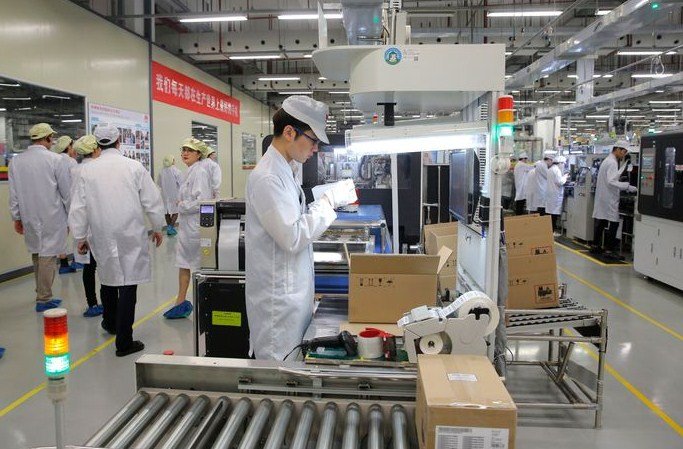Huawei’s AI chip line: Ascend series
Huawei, the Chinese telecom giant, has been developing its own AI chip line since 2018, when it unveiled its first product, the Ascend 910. The chip was designed to provide computing power for AI applications, such as computer vision, natural language processing, and recommendation systems. Huawei claimed that its chip was the world’s most powerful AI processor and Chinese media reports said the original Ascend 910 was manufactured on a 7-nanometer process. Huawei said the chip could deliver 256 TeraFLOPS for half-precision floating point (FP16) operations and 512 TeraOPS for integer precision calculations (INT8). The company also touted the chip’s efficiency, saying that its max power consumption was 310W which it said had exceeded Huawei’s original target at 350W.
However, the chip did not make a significant dent in the global AI chip market, which was dominated by Nvidia, the US-based leader in graphics processing units (GPUs). Nvidia introduced its A100 and H100 chips in 2020 and 2022 respectively, which swept up the majority of the AI chip market share globally, a trend supercharged by the emergence of generative AI. Experts said Nvidia enjoyed a massive incumbent advantage over Huawei, with one key edge being the reliance of existing AI projects on Nvidia’s software ecosystem. While Huawei has its own ecosystem version called CANN, analysts say it is much more limited in terms of the AI models it is capable of training.
Huawei’s latest chip: Ascend 910B
Huawei has not officially announced a new version of its AI chip, the Ascend 910B, but some details about the chip have emerged in public comments by some Chinese companies and academics, as well as in technical guides on Huawei’s website. In August, the chairman of Chinese AI giant iFlyTek, Liu Qingfeng, praised Huawei for producing a GPU that he said was “basically the same as Nvidia’s A100” and said iFlyTek was working with Huawei to develop a hardware and software platform for AI applications.
According to Huawei’s website, the Ascend 910B is manufactured on a 5-nanometer process, which is more advanced than the 7-nanometer process used for the original Ascend 910. The website also says that the chip can deliver 320 TeraFLOPS for FP16 operations and 640 TeraOPS for INT8 operations, which are higher than the previous version. The chip’s max power consumption is still 310W, which means it has improved its power efficiency as well.
The Ascend 910B is also compatible with more AI frameworks and models than the original Ascend 910, according to Huawei’s website. The chip supports TensorFlow, PyTorch, MindSpore, PaddlePaddle, and ONNX, as well as popular AI models such as BERT, ResNet, and GPT-3. The chip also supports Huawei’s own AI framework, MindSpore, which is designed to optimize the performance and efficiency of the Ascend series. Huawei claims that MindSpore can reduce the memory usage by 70% and the training time by 50% compared to other frameworks.
Huawei’s AI chip strategy: targeting China’s market
Huawei’s AI chip ambitions have been boosted by the US sanctions that have restricted the sales of advanced chips by Nvidia and other suppliers to China. The US government has imposed export controls on the sales of chips that are made with US technology or equipment, citing national security concerns.
This has created an opening for Huawei to win market share in China, where there is a huge demand for AI chips for various applications, such as cloud computing, smart cities, autonomous driving, and e-commerce. Sources have said that Huawei won a sizeable AI chip order from Chinese tech giant Baidu this year, which was previously a major customer of Nvidia. Baidu is using Huawei’s Ascend 910B chips to power its cloud services, such as its AI platform Baidu Brain and its smart voice assistant DuerOS.
Huawei’s AI chip strategy is to focus on the Chinese market, where it has a strong brand recognition and a loyal customer base. Huawei has also been investing heavily in building its own chip production capabilities, as well as partnering with domestic chipmakers, such as SMIC and HSMC, to reduce its dependence on foreign suppliers. Huawei has also been expanding its AI ecosystem, by launching its own AI cloud service, Huawei Cloud, and its own AI research institute, Huawei Noah’s Ark Lab. Huawei has also been collaborating with Chinese universities, research institutes, and enterprises to promote the development and adoption of AI in China.
Huawei’s AI chip ambitions are part of its broader vision to become a global leader in AI, which it sees as a key driver of the next wave of technological innovation. Huawei’s founder and CEO, Ren Zhengfei, has said that AI is the core technology that will shape the future of humanity, and that Huawei wants to contribute to the advancement of AI for the benefit of society. Huawei has set a goal to become one of the world’s top five AI companies by 2025, and to achieve a revenue of $100 billion from its AI business by 2030.

